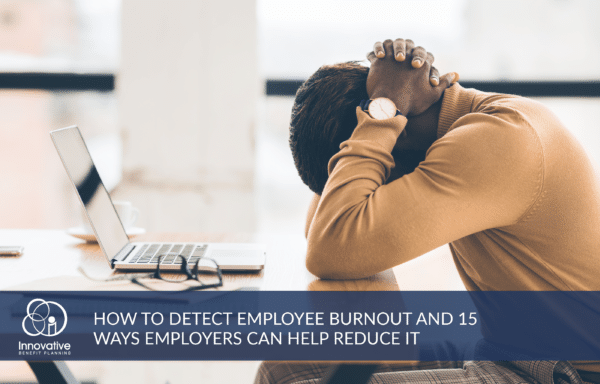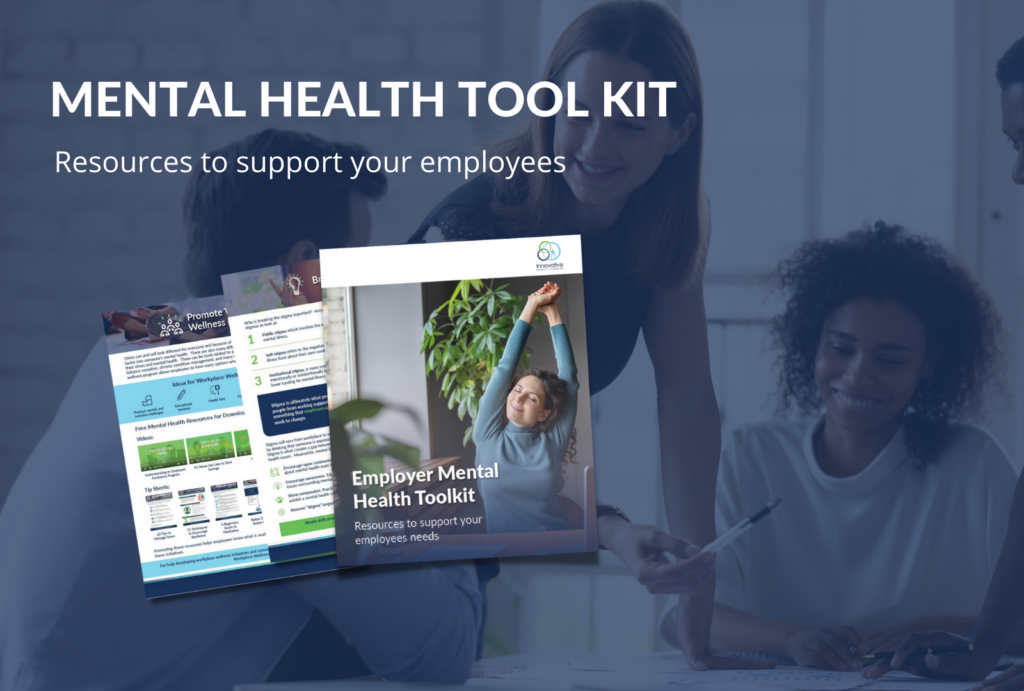How to Detect Employee Burnout and 15 Ways Employers Can Help Reduce It

Employee burnout continues to grow as the global pandemic enters its third year. In fact, experts say burnout is a primary cause for the Great Resignation, in which a record 39 million U.S. workers quit their jobs during the first 10 months of 2021.
The root causes of employee burnout have been growing for several years due to employees working more hours than they did decades ago and remote working during the pandemic intensified that trend as collaboration tools and virtual meetings blurred the line between work and home.
Companies already struggling to define new ways of working and fill open positions are also being challenged to combat burnout. The costs in lost productivity, employee turnover, and higher healthcare costs are leading more organizations to move proactively to boost employee morale and wellness. Their approach starts with:
- Open communication about burnout and other workplace mental health problems.
- Identifying the signs of burnout among individual employees.
- Taking steps to improve overall wellness in the work environment to reduce burnout and stress.
Identifying the Signs of Employee Burnout
Detecting whether your employees may be suffering from burnout or other mental health challenges in the workplace can be tricky – especially when dealing with remote workers who are seldom, if ever, in the office. Increased employee turnover may be one sign of a stressful work environment. Here are several other signals that may indicate burnout among individual workers:
- Coming to work late
- Increased absenteeism
- Becoming irritable with co-workers or customers
- Difficulty concentrating
- Cynical attitude
- Exhaustion — physical, mental, or emotional
- Heightened sensitivity to criticism and feedback
- Decreased productivity
- Signs of alcohol, tobacco, or substance abuse
- Isolation from or lack of engagement with colleagues
- Physical symptoms such as weight loss/gain, frequent headaches, nausea, panic attacks, or heart problems
Steps Employers Can Take to Reduce Burnout
Some may be surprised that a recent Gallup research indicated that the number of hours an employee works is typically not the major cause of burnout. More important factors include unreasonable workloads, poor communication, and low or non-existent manager support for workers. Here are some steps companies are taking to address burnout.
- Prioritize wellness in the workplace. Corporate wellness programs that focus on fitness, nutrition, and mindfulness tackle the root causes of stress. Regularly communicate your company’s commitment to the benefits of workplace wellness and available support services (health coaches, resources, fitness memberships, etc.). Create quiet spaces, bring in live plants, and add other aesthetics to create a less stressful office environment .
- Offer or expand employee assistance programs. Studies show EAPs return more than eight times their investment through higher productivity and lower absenteeism. Consider offering an enhanced EAP service that provides additional services.
- Promote work/life balance. Lead by example. Managers who set aside time for family and self-care provide a role model that shows other employees how to balance their personal and professional lives. Organizational policies such as flexible schedules can enable best practices. Encourage everyone to take time off.
- Emphasize management training. Studies show most people leave (or considering leaving) their jobs because of bad bosses. Poorly-training supervisors increase stress and turnover. Make sure supervisors have the training and tools they need to coach, develop, and lead team members effectively and empathetically.
- Monitor workloads and schedules. Make sure teams are not regularly stressed by long hours and unreasonable workloads.
- Add more company holidays. Some companies are taking an extra day off (or even a full week) to give everyone an additional break from the daily grind.
- Proactively address remote worker burnout. Remote workers are particularly prone to burnout, as they may feel that their workday never ends. Interacting with work-from-home employees on a regular basis helps supervisors spot trouble signs early (such as working too many hours) and coach for better results. Remote employees who lack proper leadership may not be aware of their own burnout tendencies and often fail to address the issue on their own.
- Make sure employees take time off. Studies over the past several years consistently find that more than half of American workers do not use all their vacation time. Create a culture that encourages everyone to take their annual leave. Monitor unused time off regularly so you can let employees know before it expires.
- Create clear career paths and employee goals. SHRM studies found that one of the top five workplace stressors is lack of growth and advancement opportunities. Create clear job descriptions and performance goals to establish common expectations for employees and managers alike.
- Give employees more control. Job burnout often results from employees feeling they have no control over their workload, schedules, priorities, etc. Giving them more control over some part of their working day (such as flexible hours) helps reduce these sources of stress.
- Hold regular ‘touch base’ meetings. Briefly talk with each employee on a regular basis to chat about how things are going at work and how you could help things run more smoothly for them.
- Hold walking meetings. Take your weekly status meeting or other brief get-togethers outdoors. Leaving the office and becoming more active provides a break that helps employees recharge.
- Plan technology breaks. A day filled with Zoom calls and Microsoft team meetings is exhausting. Several major companies are experimenting with such solutions as meeting-free Fridays, limiting meetings to 45 minutes, and only scheduling video calls in the morning or afternoon.
- Celebrate achievements. With so many people now working remotely, it can be more difficult to share successes across teams. The organization should help people feel they are not alone and forgotten simply because they are no longer in the office. Rewards and incentives also encourage desired behaviors and celebrate favorable outcomes.
- Encourage employee feedback. Actively seek input on ways your company could address work/life balance challenges.
Even after the pandemic ends and we establish a “new normal” workplace, the risk of employee burnout will remain. Company policies that address burnout can help improve employee health, reduce absenteeism, increase productivity, and boost recruiting and retention. Taking some basic steps to identify and prevent employee burnout provides benefits that far outweigh the costs of implementing these strategies.
If you have any questions about implementing a workplace wellness program at your organization to help reduce employee burnout or any of the mental health initiatives mentioned above, please contact Innovative Workplace Wellness.

12 Page Guide to Assist Employers in Addressing Mental Health in the Workplace
It’s no secret that work-related factors, especially during the pandemic, are impacting employee’s mental health. Download our tool kit for ideas and solutions to support and promote mental health in the workplace including an action plan to train front line managers.
Categories
Archive








